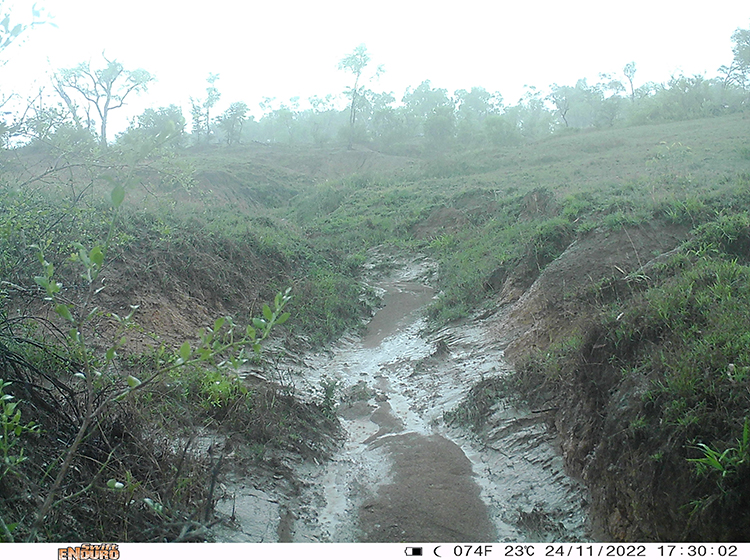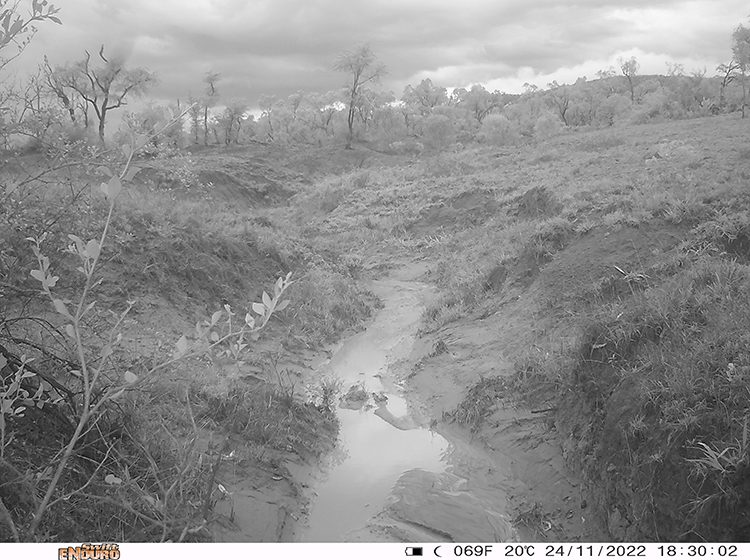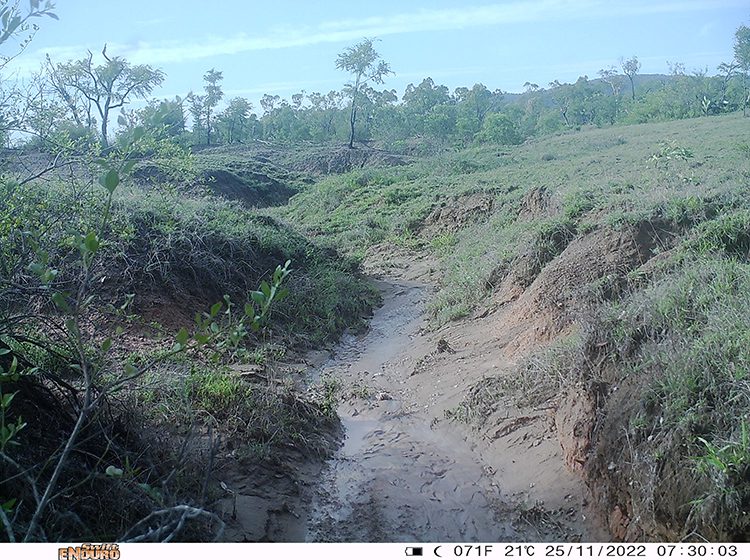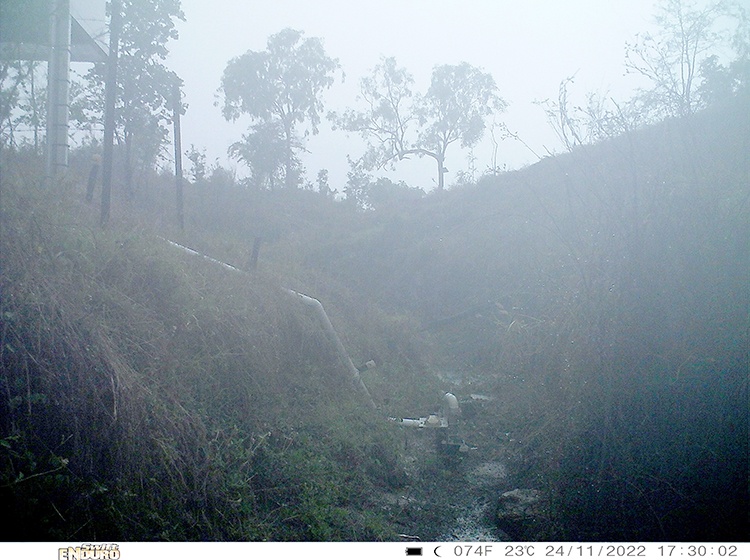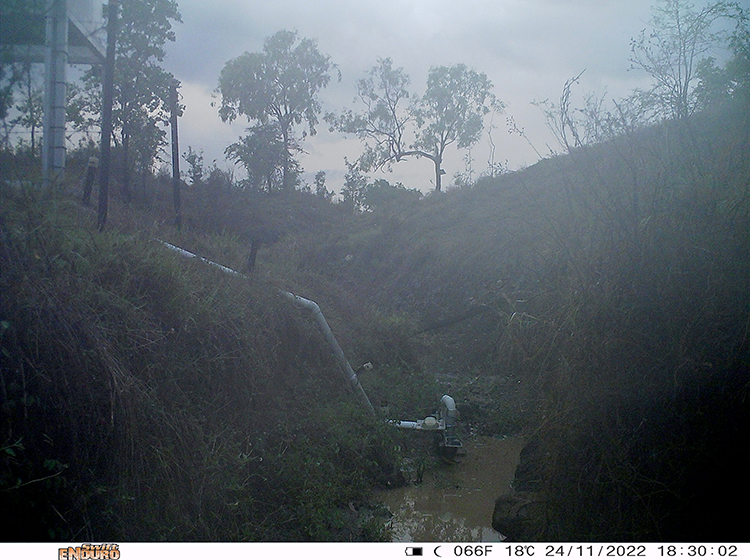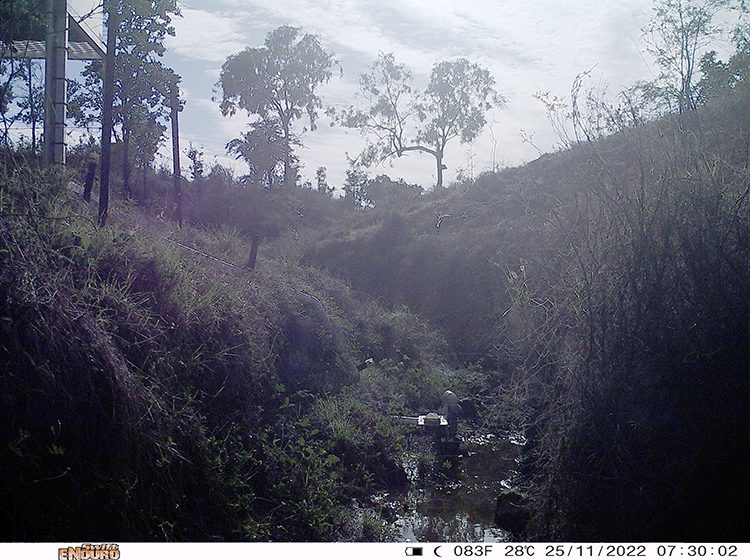Time lapse cameras monitor effectiveness of gully treatments
NQ Dry Tropics is using time lapse cameras to monitor gully treatment effectiveness. Cameras are set up at a control site and a treatment site.
The photos show what happened during a rain event at a large-scale gully site at Glen Bowen, near Collinsville.
The first photo taken at the control site, timestamped at 5.30pm on November 24, shows a considerable amount of water flowing. An hour later (middle photo), most of the water had drained away as surface water instead of being infiltrated in the soil.
The following morning, 11 hours later, there was no water apart from a few shallow puddles. The surface water had flowed into the Bowen River adjacent to the control site.
CONTROL SITE
Photos taken at the treatment site on the same day, at the same time, show there was a delay in the flow of water, suggesting water had stayed in the landscape. Groundcover within the gully has improved since treatment, which has helped slow the flow of water, and aided infiltration into the soil and being retained by grass roots.
Rainfall data shows 11.5mm was recorded at nearby Strathmore Station during this rain event.
Remediated gullies help to reduce erosion and slow water movement, keeping it on property where it can improve soil and pasture health and reduce sediment loss.
TREATMENT SITE
Monitoring large-scale gully remediation sites ensures the longevity of the investment and improves understanding of the most cost-effective ways to bring eroded land back into production. It’s vital to ensure continuous improvement and confidence that sediment will be retained on country for the long-term.
Remediation works at Glen Bowen were completed through the Landholders Driving Change project, in partnership with Neilly Group who designed and project-managed the works. Three major gully sites covering an area of 10.2 hectares adjacent to the Bowen River were treated.
Ongoing monitoring and maintenance work is being carried out through the Burdekin Major Integrated Project Gully Maintenance and Monitoring project, which is funded through the Queensland Government’s Queensland Reef Water Quality Program.
ALSO IN THIS ISSUE:

